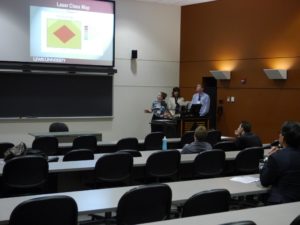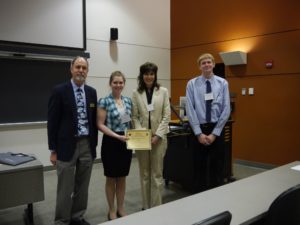Lewis University, 2012
Advised by: Professor Chuck Crowder

Since 2005, reported laser attacks from people on the ground directed towards arriving and departing aircraft have increased over 300%. A laser aimed at the windshield of an aircraft startles a pilot and may cause injury. This study determined empirical evidence of laser intensity in the flight deck and the potential for harm to the human eye at various distances.

Results of this study revealed that relatively low-powered lasers had measured intensity levels through cockpit windshields at the 200 and 500 feet distances that may cause damage to crewmembers’ eyes according to standards established by the federal government. At longer distances of 1000, 1500, and 2000 feet, these same lasers did not reveal measured intensities at levels to cause damage to crewmembers’ eyes; however, they were considered as having potentially distracting visual effects in flight that were further categorized as temporary flash blindness, glare or disruption, and distraction or startle.
The research performed for this project culminated in first prize at the 2013 University Aviation Association Graduate Student Poster Contest, first prize at the Purdue University Graduate Student Aviation Research Symposium, and a publication in the Journal of Aviation Technology and Engineering.
